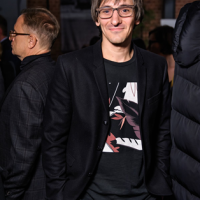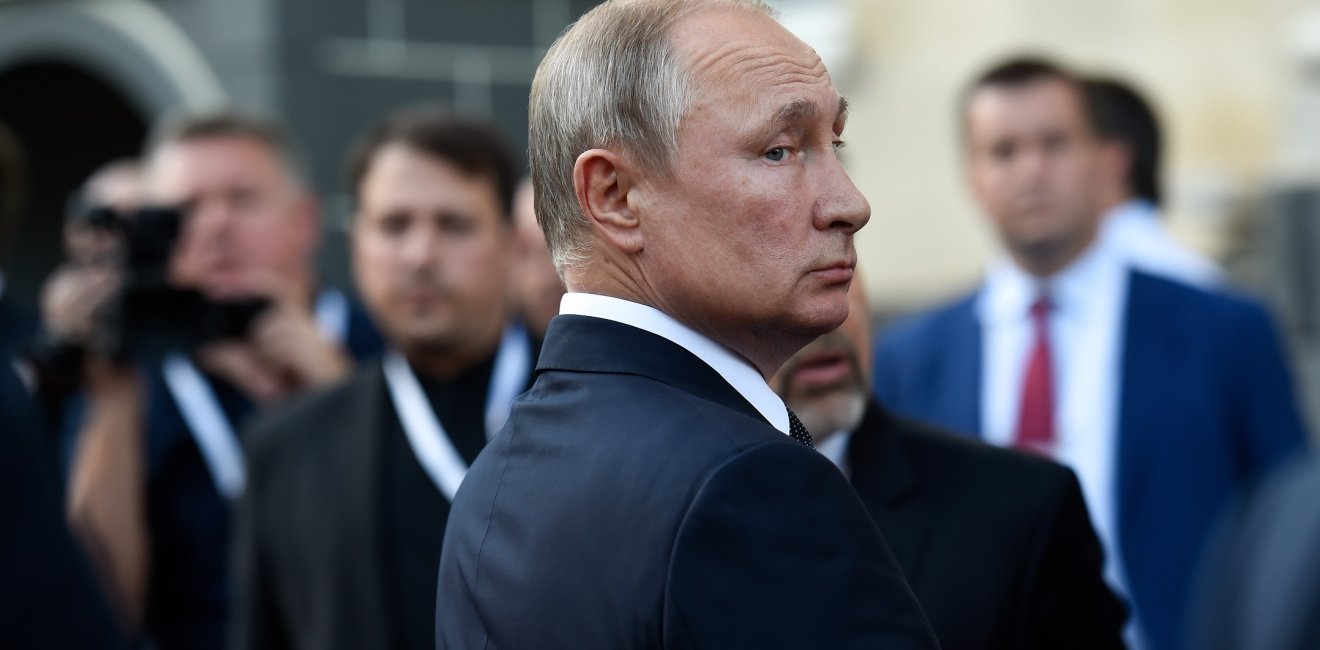
A blog of the Kennan Institute
BY MIKHAIL FISHMAN
Nations today are trying to come to terms with the war crimes committed by the Russian military in Ukraine as the Russian army gradually enters a new phase of belligerence, probably the bloodiest one, of this war. The threat of a nuclear strike seems more plausible than ever.
If twenty years ago someone had told Vladimir Putin that he would lead a war against Ukraine, he himself would have dismissed it as a bad dream. Did he want to turn himself into one of the most dangerous and criminal aggressors ever known? Until the very last minute, a full-scale invasion seemed improbable to the majority of Russia watchers. Yet it happened. How?
Before his rise to power, Vladimir Putin appeared to have a clean slate. A career intelligence officer, he was more of a Soviet bureaucrat, a sly business-minded official who did not seem to have a clearly articulated worldview. During his first election campaign, he turned his down-to-earth pragmatism into a political platform: the perennial debate over what better suited Russia, liberalism or nationalism, adherents of Westernization or Slavophiles, was fruitless, he declared. What mattered was a government able to deliver what people needed.
In January 2000 the American journalist Trudy Rubin asked a panel of Russian speakers at the World Economic Forum, “Who is Mr. Putin?” In a developed democracy, where a candidate with no views could never get votes, Putin’s political ambiguity would be a liability. But in Russia, it was precisely this ambiguity that propelled him to the heights of power.
Liberal elites believed he would continue Yeltsin’s economic reforms; Russia’s leftists hoped he would reverse them. The pro-Western intelligentsia aspired for closer ties with the West; nationalists expected he would try to reconstitute a Russian empire.
After the Soviet regime collapsed, many Russians assumed they would become more like the free and prosperous West. This aspiration ended in tears, and Putin turned himself into a headliner for the resulting march of frustration and historical ressentiment.
Thoroughly nourished and tenderly curated by propaganda over the past twenty years, this grievance would pave the way for Putin’s warpath. During his years in power, Putin has erased every element of Russia’s still inchoate and undeveloped system of checks and balances in order to amass the amount of power that no Russian ruler has had since Stalin. He has also achieved absolute unaccountability, amplified by his seclusion since the start of the pandemic.
Tyrannies feed on wars. Politically, Putin has found himself in a constantly narrowing corridor of opportunities: the fewer options available to him to achieve economic growth and bolster his public standing, the more he has relied on violence and militarism. Also, tyrannies turn their rulers’ personal emotions and obsessions into doctrines and policies.
Putin has been obsessed with Ukraine since the early 2000s because Ukraine became the only field where he kept losing. In 2004 he campaigned for Viktor Yanukovych, congratulated him twice on his presidential victory, yet finally had to admit his defeat when the Orange Revolution rejected what the majority of Ukrainians saw as a rigged election. “That’s when Ukraine grabbed him,” Sergei Pugachev, a businessman close to Putin at the time, recalled many years later. Almost ten years later, Putin lost again, when he forced Yanukovych, then president, to renege on the economic agreement with the EU, a move that once again triggered massive street protests, which this time turned into an armed antigovernment—and anti-Putin—uprising.
Yet all these explosive components weren’t enough to transform a nonideological opportunist into an irrational zealot, ready to start the deadliest war in Europe since World War II. The already highly flammable mix still needed a blasting fuse. The machine of Putin’s global warfare was set in motion when his historic mission, of “the stubborn, almost mystical belief that his destiny was to restore Russia’s sphere of influence,” as former US ambassador to Russia and current CIA director Bill Burns has put it, finally matured.
Populists are manipulators. They create artificial agendas. But what happens when they start to believe in their own stunts? In 2003, when Viktor Yushchenko, the leader of the Ukrainian opposition, visited Donetsk, the historic center of the Donbas, the city met him with billboards depicting Yushchenko impersonating Hitler, accompanied by slogans like “No to Nazism.” Back then it was a ruse, designed to drive a wedge between Yushchenko and the Donbas voters on the brink of the presidential elections in Ukraine. From today’s perspective it looks like a prelude to this war.
So, how do PR stunts turn into accepted narratives? Throughout the 2000s, the idea of Russia’s special path was secondary to Putin’s paramount ambition, staying in power. Back then he produced the notion of sovereign democracy. Its public message was that Russia would not comply with the rules of Western democracies. Its real purpose was to more firmly entrench Putin’s unchecked and boundless rule. Why did he need to amass all that power? In 2011, when Putin was heading back to the Kremlin after Dmitry Medvedev’s four-year shift, he still had not made his big idea public.
In October 2011, Putin came up with the idea of the Eurasian Union, a project of transnational integration across the post-Soviet space, in a way reiterating the proposal of a renewed and modernized USSR presented by Mikhail Gorbachev in 1991. “We offer the model of a powerful supranational association, which would be able to become one of the poles of the modern world,” Putin wrote at the time.
But the article, produced as part of Putin’s presidential campaign routine, remained largely unnoticed, and the candidate himself never mentioned it. His campaign did not have a clear message for Russia’s future. Putin didn’t have a plan other than to stay at the top: total control was his political platform; absolute power was all he cared about. In his mind, the future looked no different from the present.
But this plan of maintaining the status quo became obsolete the day after anti-Putin street protests broke out in December 2011, triggered by massive vote fraud during a parliamentary election. Going down in history as the Bolotnaya movement, these protests were a totally new challenge to the regime. Putin’s campaign had to come up with an answer.
The Bolotnaya protesters stood for a democratic, modernized, Westernized Russia, while Putin was a conservative, a keeper of Russia’s traditional values. People in the street stood for multiculturalism, he represented tradition and orthodoxy. They saw Russia as part of a greater world, he kept guard over Russia’s sovereignty. Just as a frightened octopus releases a cloud of ink to distract the attacker, Putin, at the time, created his own political myth, one he came to inhabit.
Putin has become a leader deeply convinced of his historic mission to restore Russia’s greatness. Soon his plan for the Eurasian Union became salient. In the summer of 2013, from Moscow’s perspective, Ukraine’s path to the economic association agreement with the EU was no longer compatible with Putin’s new union.
By the time Ukrainians took to the streets in November 2013, the idea of the Eurasian Union was already in line with the concept of Holy Russia, which would later be used as an ideological pretext for Russia’s military invasion. It’s no coincidence that Russia’s patriarch raised his voice in favor of Putin’s war with Ukraine: he entered the political scene in 2012 preaching against the Bolotnaya, and since then Russia’s Orthodox Church has functioned as an indispensable part of Russia’s state machine. The more religion served political goals, the more religious seemed Putin’s determination.
Recently, Putin told a story of how he became president. He started with his usual routine: “Boris Yeltsin did not hand over this power to me.” But this time Putin added a twist: he revealed that back then, he himself could not find a successor when he was promoted and had to leave his position as the head of the FSB. “Why?” Putin asked, and explained: “[Because] not everyone, in fact, very few wanted to assume this responsibility.”
The point of Putin’s story is clear: in the dark times of the late 1990s, the leadership lacked the power to pick a successor; instead, those who had the ultimate strength of will could step up and choose their destiny—and he was the only one who did. In retrospect, it’s evident that by the time Putin told this story in the summer of 2021, the blasting fuse of his explosive war machine had already been lit, and Putin had already made up his mind: he would invade Ukraine.
The opinions expressed in this article are those solely of the authors and do not reflect the views of the Kennan Institute.
Author

Russian Journalist and Filmmaker

Kennan Institute
After more than 50 years as a vital part of the Wilson Center legacy, the Kennan Institute has become an independent think tank. You can find the current website for the Kennan Institute at kennaninstitute.org. Please look for future announcements about partnership activities between the Wilson Center and the Kennan Institute at Wilson Center Press Room. The Kennan Institute is the premier US center for advanced research on Eurasia and the oldest and largest regional program at the Woodrow Wilson International Center for Scholars. The Kennan Institute is committed to improving American understanding of Russia, Ukraine, Central Asia, the South Caucasus, and the surrounding region through research and exchange. Read more

Explore More in The Russia File
Browse The Russia File
Chechnya as a Model of Modern Russia

Russia’s Indigenous Communities and the War in Ukraine

Gas and Power in a Changing US–Russia Relationship

